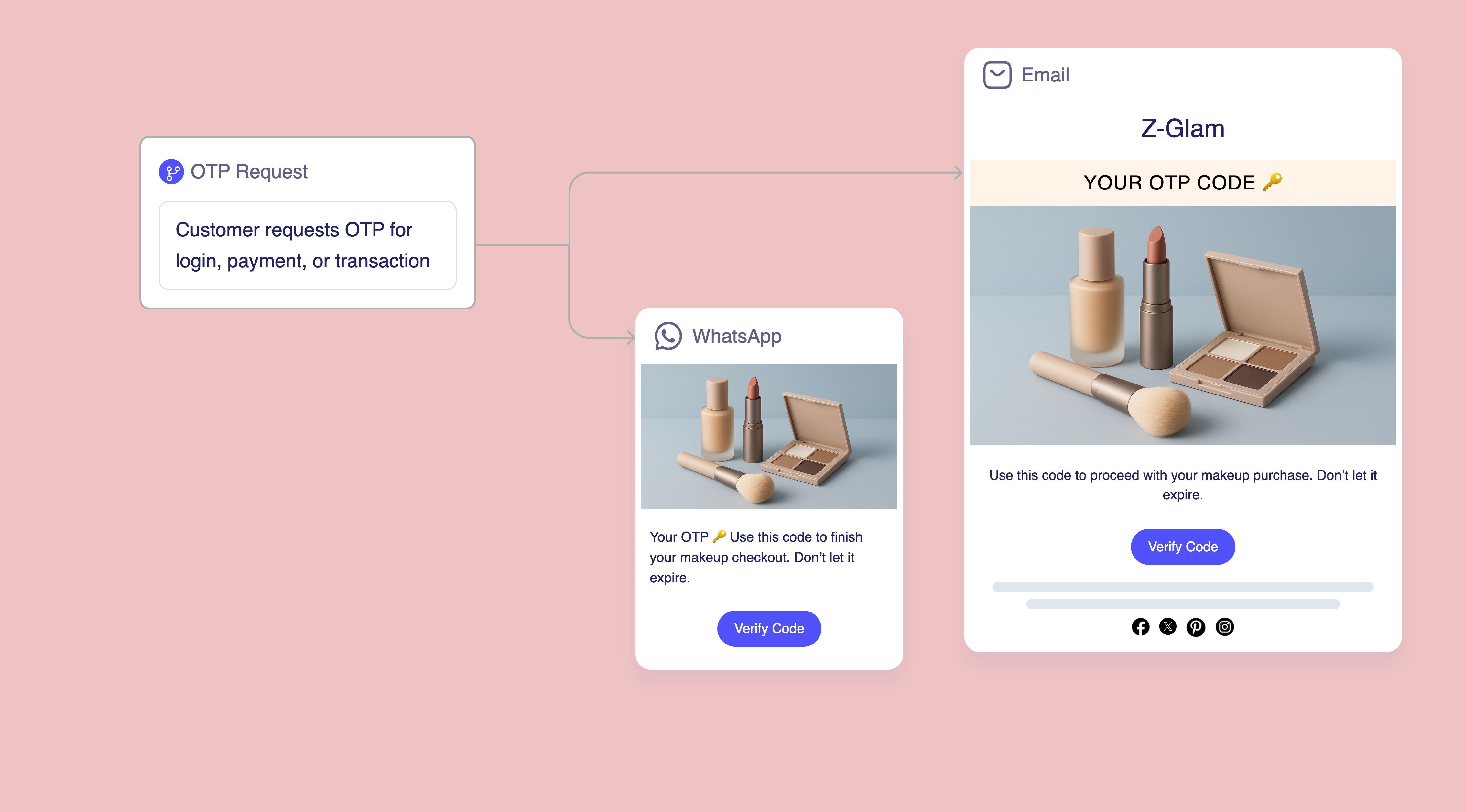
OTP Notifications
Secure transactions and logins with fast, reliable one-time password (OTP) notifications via Email and WhatsApp. Build trust and prevent fraud while keeping the customer experience smooth.

What is an OTP Notification?
OTP notifications deliver a time-sensitive verification code when a customer signs in, updates their account, or completes a transaction. These notifications add a security layer, ensuring only authorized users can proceed. Quick OTP delivery helps brands balance safety with convenience, reducing fraud risk while maintaining a frictionless experience.
Why OTP Notifications Matter

Challenges

Opportunities
Outcomes
Stronger account and transaction security
Reduced fraud and unauthorized access
Higher customer trust and loyalty
Who is it for?
Audience
Exclusions
How it Plays Out
A sample sequence for this use case.
Your OTP code: [OTP] Here's your secure login code: [OTP] → [CTA]
Your OTP is [OTP]. It will expire in 5 minutes. Do not share with anyone → [Link]
Your security code expires soon → [Enter Code Now]
Need a new OTP? Request verification again → [Get New Code]
Best Practices
- Send OTP codes immediately when requested to minimize user wait time and maintain security window integrity.
- Include clear expiration timing and security warnings about not sharing codes to maintain authentication security.
- Provide easy options to request new codes if initial attempts fail or expire during the verification process.
OTP Notifications Examples & Prompts
Channel Examples
Automate with Zenie Prompts
With Zenie, you can automatically trigger OTP delivery when verification requests are initiated.
Explore Similar eCommerce Marketing Strategies
FAQs
How do OTP campaigns differ from regular two-factor authentication?
OTP provides single-use codes for immediate verification, while 2FA typically involves ongoing secondary authentication methods. OTP is often used for specific high-security actions rather than general account access protection.
What delivery methods work best for OTP verification codes?
SMS typically provides the fastest delivery for time-sensitive OTP codes, though email and app notifications can work depending on user preferences and security requirements. The key is reliable, immediate delivery.
How long should OTP codes remain valid for security?
Most security standards recommend 3-5 minute expiration windows for OTP codes to balance user convenience with security. Shorter windows may frustrate users while longer periods increase security risks.
Should OTP be required for all transactions or only high-risk activities?
Focus OTP on high-value transactions, new device logins, sensitive account changes, and suspicious activity patterns. Requiring OTP for every minor action can create friction without proportional security benefits.
How do you measure OTP campaign effectiveness?
Track OTP delivery success rates, code usage completion rates, security incident reduction, and user satisfaction with authentication processes. Monitor whether OTP implementation reduces fraud without significantly impacting user experience.


